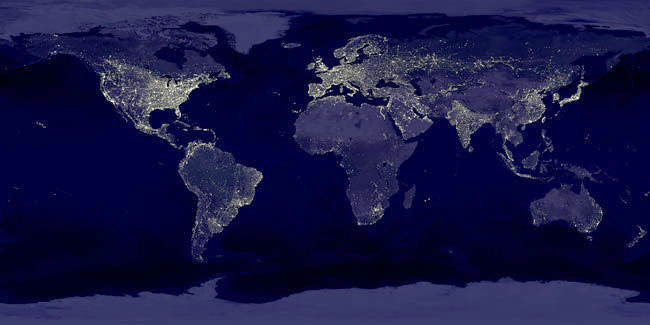71° 14' 18" W
Learn more about Lat/Long
The EarthView team is pleased to return to the Ahern School, which has been part of the program almost every year since it began. By now, well over a thousand Ahern students have been among the 50,000 EarthView participants! You can read some of the things we shared on the blog for our 2010, 2011 and 2012 visits -- including some toponym notes.
Because geographers study many kinds of spatial patterns, we interact with a lot of other scientists and scholars. Biogeography, for example, is closely related to ecology. The National Center for Ecological Analysis and Synthesis (NCEAS) supports Kids Do Ecology which includes World Biomes. As geographers who know that any kind of region can be defined according to different criteria, we appreciate that this web site explains that even the number of biomes can vary, depending on those criteria.
We include biomes here because we know that they are an important part of how Ahern students are learning world geography this year. Biomes are types of biotic (biological) communities, each of which can be found anywhere in the world that certain abiotic conditions are found. That is, if climate and soils in two places are similar, then similar plants and animals are likely to be found. EarthView is a wonderful place to learn about the spatial arrangement of major biomes on the planet, in their correct proportions and relative locations.
As Ahern students have been learning, biomes are among the physical factors that influence the distribution of human populations. The famous "Earth at Night" image is not exactly a population-density map, but brightly-lit areas tend to be those of significant human settlement. What biomes are found in the places with very few humans? What are some other factors that encourage or discourage human settlement?
The image above appears on Dr. Hayes-Bohanan's Environmental Geography blog but is also available as a poster, and appeared as NASA's Astronomy Picture of the Day on November 27, 2000. Notice that it is a "picture" and not a single satellite image. No single view can show the whole planet at once -- except of course EarthView!
Yesterday's APOD was equally spectacular -- the first image ever transmitted from a comet! Visit the November 13, 2014 APOD page to learn about the details of this image, taken from just 2 miles above the surface of the comet known as C67/P Churyumov-Gerasimenko, which is 300,000,000 miles from earth and moving at speeds of up to 80,000 miles per hour. This is so far away -- 30 light-minutes -- that signals between the European Space Agency (which launched the mission) and the probe are delayed by 30 minutes each way! Read many details of the mission on the ESA's Rosetta FAQ.




No comments:
Post a Comment